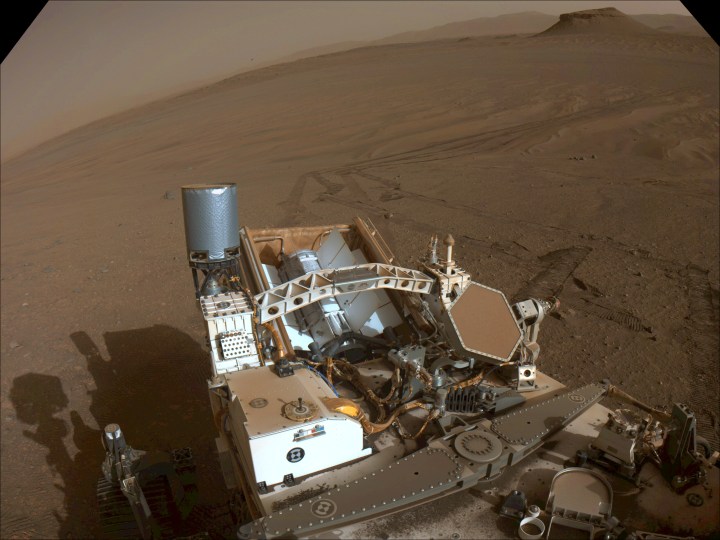Today marks the second anniversary since the rover Perseverance landed on the surface of Mars on February 18, 2021. The nail-biting descent and landing process was followed around the world, and was particularly memorable because of the spectacular video taken from both the rover and its descent stage showing the touchdown onto the red planet.
In the two Earth years since Perseverance arrived on Mars, it has collected samples of rock and built a sample depot, deployed the Mars helicopter Ingenuity, created oxygen from the carbon dioxide atmosphere, recorded the sounds of Mars for the first time, trundled along the floor of the Jezero crater and made its way toward the site of an ancient river delta, and taken some stunning images.

“Anniversaries are a time of reflection and celebration, and the Perseverance team is doing a lot of both,” said Perseverance project scientist Ken Farley of Caltech, in a statement. “Perseverance has inspected and performed data collection on hundreds of intriguing geologic features, collected 15 rock cores, and created the first sample depot on another world. With the start of the next science campaign, known as ‘Upper Fan,’ on Feb. 15, we expect to be adding to that tally very soon.”
The rover recently celebrated its first martian birthday — as Mars orbits the sun further out than Earth, a year there lasts longer at 687 days, or a bit less than two Earth years. As Mars missions have timelines measured in Mars years, that birthday marked the end of Perseverance’s primary mission or the minimum time that the rover needed to operate for. But as the rover is healthy and well it moved straight into its extended mission and is continuing its science goals of exploring Mars and searching for evidence of ancient life on the planet.
To celebrate this milestone, NASA shared some figures for Perseverance’s journey thus far. Since its landing, the rover has driven 9.3 miles, taken 662 recordings with its SuperCam microphone, taken over 15,000 hours of weather data, fired its laser used to analyze rock samples over 230,000 times, and taken a total of more than 166,000 images.
“Behind each number is a lot of thought and effort from a very talented group of women and men on the Perseverance team,” said Art Thompson, Perseverance project manager at JPL. “We have come a long way together, and I can’t think of a better group to work with as we go even farther.”



